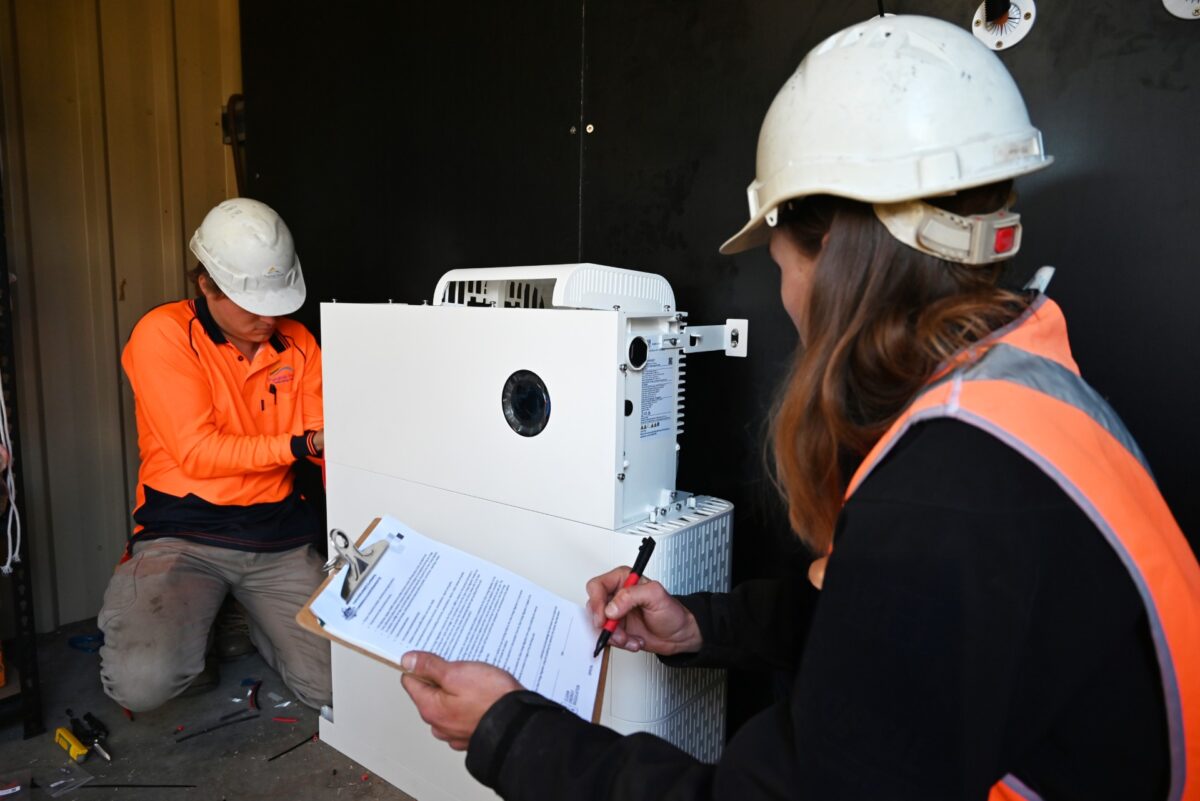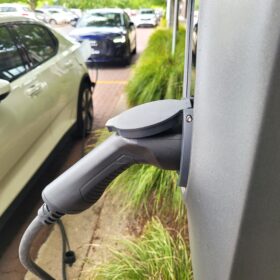The policy underpinning the program is exciting and broadly considered the most important to consumer energy since the launch of the national rooftop solar rebate nearly 15 years ago.
The batteries program, which provides around 30% discount on typical small-scale batteries installed from 1 July 2025, has sparked a surge in installations, with nearly 60,000 by mid-September. We now have well over 4 million rooftop solar systems country-wide, and we expect at least a million batteries to be installed within the next four to five years which will result in considerable savings on wholesale energy prices. All discounts under the program are fully funded by the Australian government.
Solar batteries need to be installed with a new or existing solar PV system. Batteries will help individual households and business save on energy costs, create jobs for the industry, and reduce costs for all electricity users over time as more batteries are installed, taking pressure off the grid.
There is also the opportunity for battery customers to become a part of a virtual power plant (VPP). A VPP is a network of solar batteries that can work together when the grid needs extra energy (like a power plant). By drawing an amount of energy from each battery, the VPP creates a large pool of energy that can be shared. Connecting a battery to a VPP can help reduce pressure on the grid and lower energy costs.
Robust regulatory framework
The Clean Energy Regulator (CER) is responsible for administering the program under the Small-scale Renewable Energy Scheme (SRES) and ensuring that participants, industry, and other stakeholders are informed, prepared and compliant with all program requirements. The SRES is a tried-and-tested scheme that has successfully supported rooftop solar for 15 years and the addition of batteries to the scheme’s design is welcome.
The batteries program builds on the established and successful controls of the SRES. Under this framework, all batteries and inverters must be listed on the Clean Energy Council (CEC) approved products list, which ensures they meet both Australian and international standards.
In any market with significant growth there is a need to safely increase the number of qualified workers and approved products. Installers are required to be licensed electricians who have completed mandatory additional training and hold accreditation through Solar Accreditations Australia. In addition to these existing requirements, installers will need to undertake further mandatory training specifically focused on battery systems. They must also continue to comply with all relevant safety regulations set by local, state and territory authorities.
Under the SRES, legislation requires that the accredited installer sign off on the electrical work and complete a written statement to be eligible for small-scale technology certificates or STCs (the rebate). Failure to meet requirements under the scheme will result in the rejection of claims.
Similarly, retailers have obligations to ensure that customers are buying what is suitable for them. Retailers must provide upfront written evidence to the system owner to ensure they understand what the system is going to do and that it is appropriate for their needs. This includes an accepted quote that includes the retailer’s obligations to connect the system to the grid.
Retailers who provide false written statements to the CER will face serious consequences. We have a range of compliance actions available, including removing installers and retailers from the SRES, leaving them ineligible to receive STCs under the scheme. In addition, the CER may pursue civil or criminal prosecution against entities that engage in dishonest conduct. We have previously taken enforcement action against rooftop solar installers for wilful non-compliance under the SRES.
Manufacturers have obligations to provide serial numbers to the CER which will support tracking of product installations and support product recalls if required.
Safety a priority
While the Commonwealth does not have jurisdiction over electrical safety or work health and safety – matters governed by state and territory laws – the CER engaged closely with the Department of Climate Change, Energy, the Environment and Water, key industry bodies, and state and territory regulators in the lead up to the program’s launch to ensure safety is a priority.
Battery inspections are underway on eligible batteries and will be increased as the program and its supporting systems mature. Inspections ensure that installations are conducted according to the regulations and are eligible for STCs and will inform continuing communications to industry to ensure training modules for installers are up to date and relevant. Early inspections focus will be on effective communication to all stakeholders and feedback to relevant regulatory authorities in relation to any emerging program risks. A summary of inspection findings is published on the CER website.
Consumer protection
To ensure the ongoing success of the batteries program, we advise consumers to conduct thorough research before making any purchase. This includes obtaining at least three quotes, choosing approved products, and buying from accredited and trusted retailers. Consumers should also be aware that during the initial rollout of the program, wait times for ordering and installing new batteries may be longer than usual as stock and supply levels ramp up to meet demand.
Sales practices and contract-related issues fall under the jurisdiction of state and territory fair trading and consumer protection agencies. We encourage anyone who witnesses or becomes aware of misconduct within the program to report it promptly to the Australian Competition and Consumer Commission (ACCC) and the relevant state or territory consumer protection agencies. The CER works in close collaboration with these authorities, and any concerns raised will be reviewed and referred as appropriate.
Consumers and industry can feel confident in the Cheaper Home Batteries Program, knowing it is underpinned by robust planning, legislation, and regulation and backed by amendments to the Renewable Energy (Electricity) Regulations 2001. The program is fully funded by the Australian government through the purchase of STCs, meaning no additional costs are passed on to households.
With a clear regulatory framework, strong compliance measures, and a focus on safety and affordability, this initiative represents a bold and exciting step forward in Australia’s renewable energy transition – empowering households and businesses to store clean energy and contribute to a more resilient, sustainable grid.
Author: David Parker, AM, Chair, Clean Energy Regulator
The views and opinions expressed in this article are the author’s own, and do not necessarily reflect those held by pv magazine.
This content is protected by copyright and may not be reused. If you want to cooperate with us and would like to reuse some of our content, please contact: editors@pv-magazine.com.








By submitting this form you agree to pv magazine using your data for the purposes of publishing your comment.
Your personal data will only be disclosed or otherwise transmitted to third parties for the purposes of spam filtering or if this is necessary for technical maintenance of the website. Any other transfer to third parties will not take place unless this is justified on the basis of applicable data protection regulations or if pv magazine is legally obliged to do so.
You may revoke this consent at any time with effect for the future, in which case your personal data will be deleted immediately. Otherwise, your data will be deleted if pv magazine has processed your request or the purpose of data storage is fulfilled.
Further information on data privacy can be found in our Data Protection Policy.